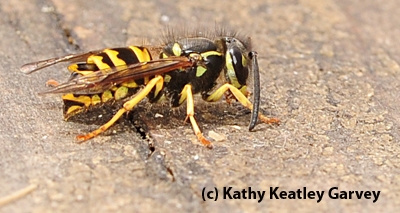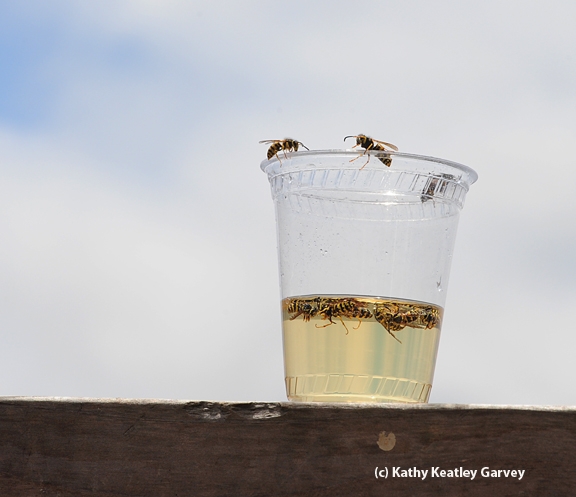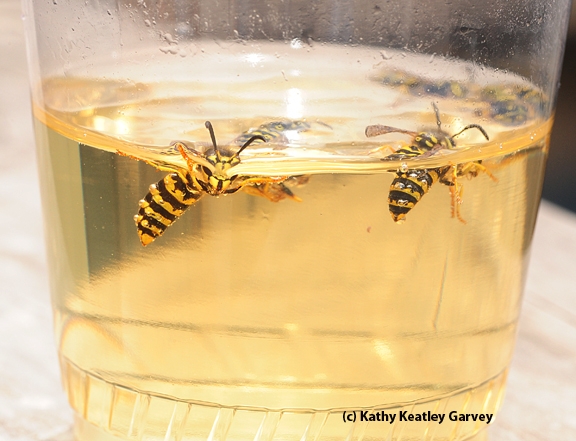
As the guests dined on seafood, yellowjackets dined on bits of protein left behind.
The half-filled glasses were there to draw the yellowjackets away from the picnic tables. Don't know what was in the plastic glasses, but whatever it was, it did not kill them. It just slowed them down. A little. They jumped in, swam around, and climbed out.
Yellowjackets (genera Vespula) are pests.
"Defensive behavior increases as the season progresses and colony populations become larger while food becomes scarcer," wrote authors Eric Mussen of Uc Davis and Michael Rust of UC Riverside in the newly updated UC IPM Pest Note, Yellowjackets and Other Social Wasps.
"In fall, foraging yellowjackets are primarily scavengers, and they start to show up at picnics and barbecues, around garbage cans, at dishes of dog or cat food placed outside, and where ripe or overripe fruit are accessible. At certain times and places, the number of scavenger wasps can be quite large."
Yes, indeed. Uninvited guests are likely to join your picnic.
The ones we observed were Vespula pensylvanica, commonly referred to as "meat bees" because they like meat, including the hamburgers, hot dogs and other protein you serve at your picnic and at other outdoor outings. They also like sugary drinks.
An excerpt from the Pest Note:
"Usually stinging behavior is encountered at nesting sites, but sometimes scavenging yellowjackets will sting if someone tries to swat them away from a potential food source. When scavenging at picnics or other outdoor meals, wasps will crawl into soda cans and can sting your lips or the inside of your mouth or throat."
Want to know more about yellowjackets and other social wasps? Access or download the Pest Note.
Attached Images:

